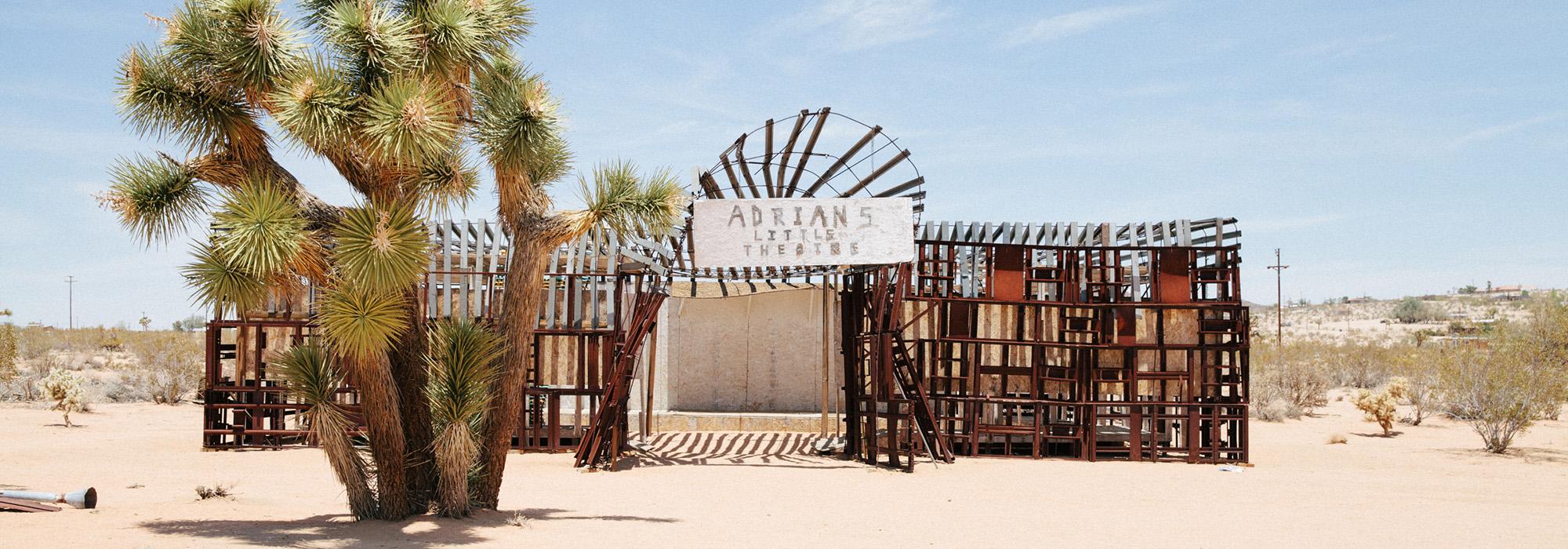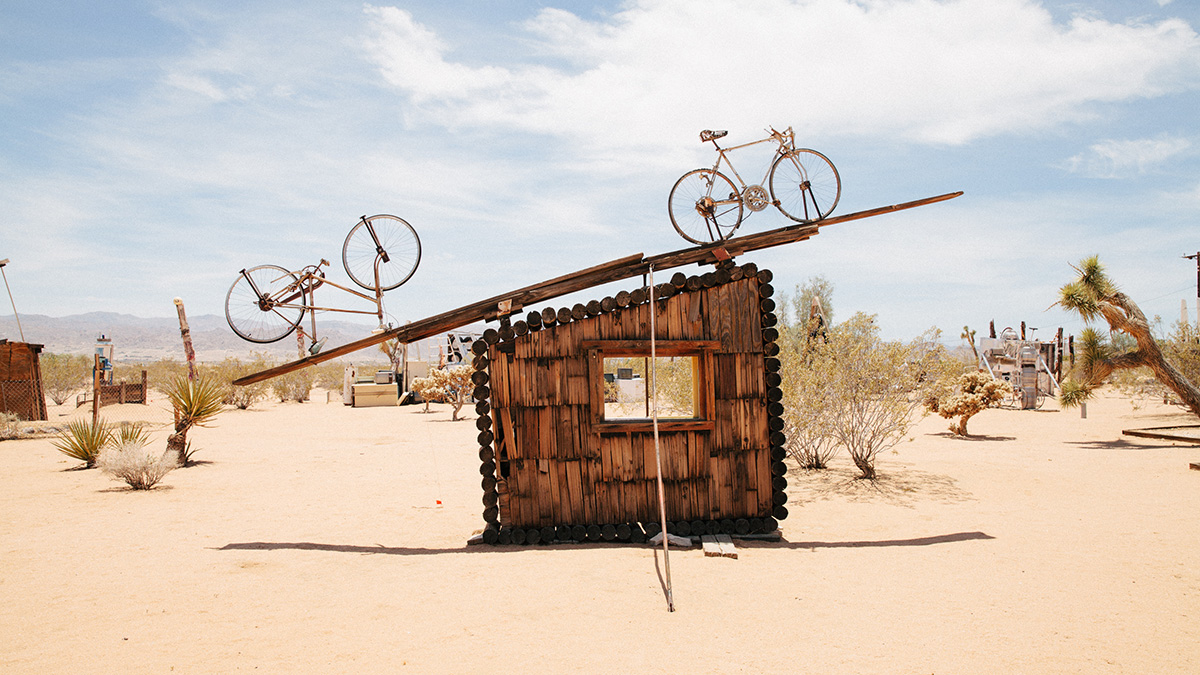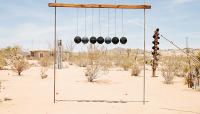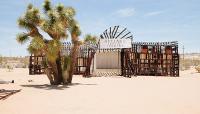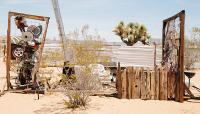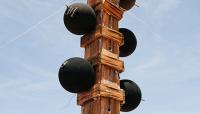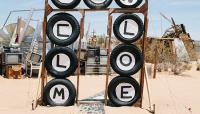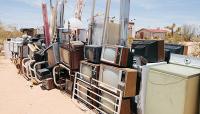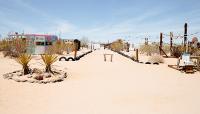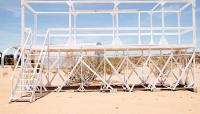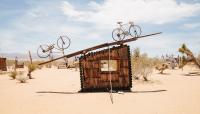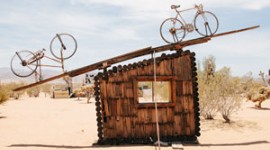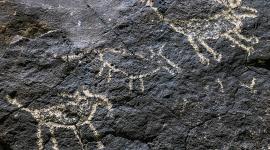Located on a ten-acre rural plot in the Mojave Desert on barren scrub desert surrounded by a few homes and slightly rising foothills, this assemblage of outdoor artwork represents the final ten years of work developed by artist Noah Purifoy. The site, which includes his home and studio and is collectively known as The Environment, was selected by Purifoy in 1994 after 30 years as a leader of the Los Angeles Black Arts Movement. Purifoy, who had experimented with creating sculptural installations from found objects in response to the 1965 Watts Riots, sought to inspire creativity from commonplace objects by displaying them in the natural environment.
Found materials, including bowling balls, tires, folding chairs, discarded televisions and computers, corrugated metal, ladders, wood, and aluminum cafeteria trays form 120 sculptural assemblages, 77 of which were developed on site during Purifoy’s occupancy. The harsh environment, including the native flora of Joshua trees, cholla cactus, creosote, and yucca, accelerates the weathering of the objects and calls into question their intended uses. Providing a connection between sculpture and architectural installation, many of the pieces are designed to be entered. In 1999, the Noah Purifoy Foundation was established to protect the work and site of the Outdoor Desert Museum. The final piece was constructed in 2004, the year Purifoy died in his studio home.



